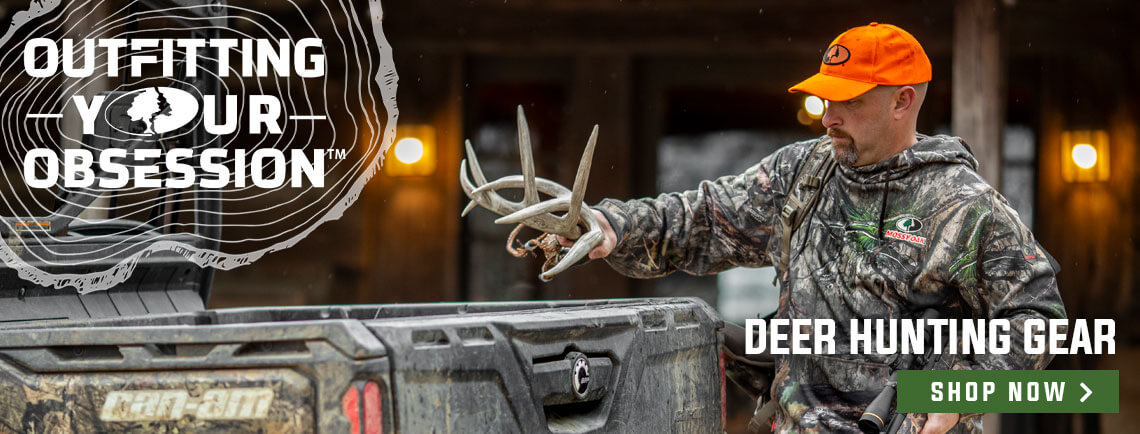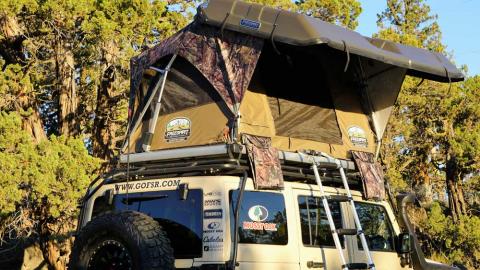Heath Wood
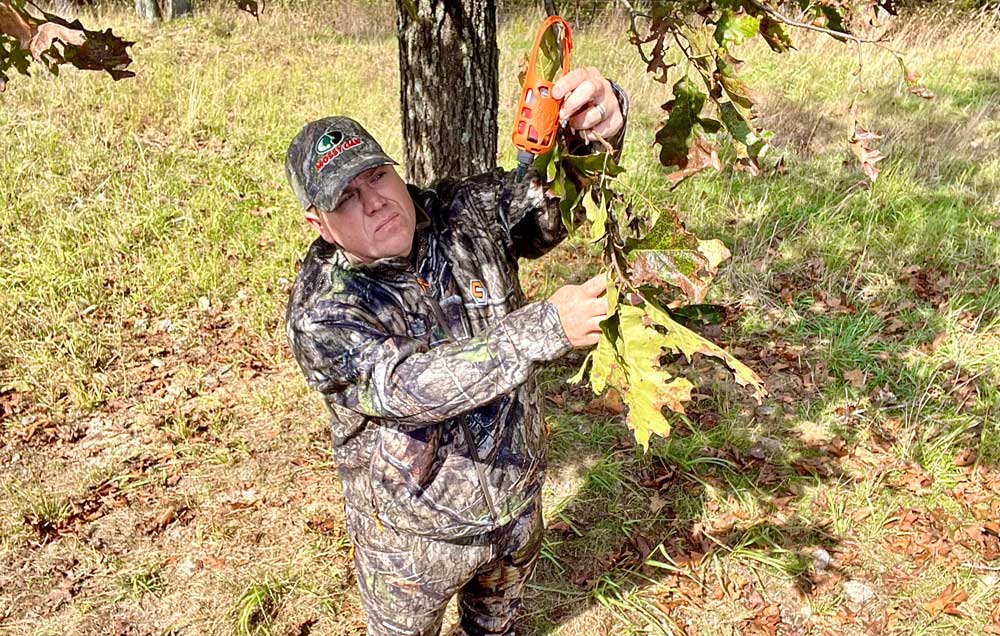
The phases of a whitetail buck’s life are highlighted throughout the hunting season; these different phases are what keep hunters on the edge of their toes each year. It’s as if hunters are playing chess with one of the most intriguing animals on the planet.
September and early October are considered the early season; a buck is generally on a feeding pattern. While this feeding configuration is in full swing, hunters try to figure out the pattern and make a harvest. There is also a famous phase known as the rut that begins showing signs during mid-October, full swing in mid-November, and finishes out the last two weeks of November.
Throughout the two-and-a-half-month period of different buck activities, many hunters like to partake in using scents and lures in hopes of drawing a buck into shooting range. Even though hunters can use scents throughout the entire season, it is the pre-rut that occurs during the last two weeks of October and the first week of November that the use of scents can be the most effective. Here are three scents that a hunter must use during the pre-rut to draw in a mature buck.
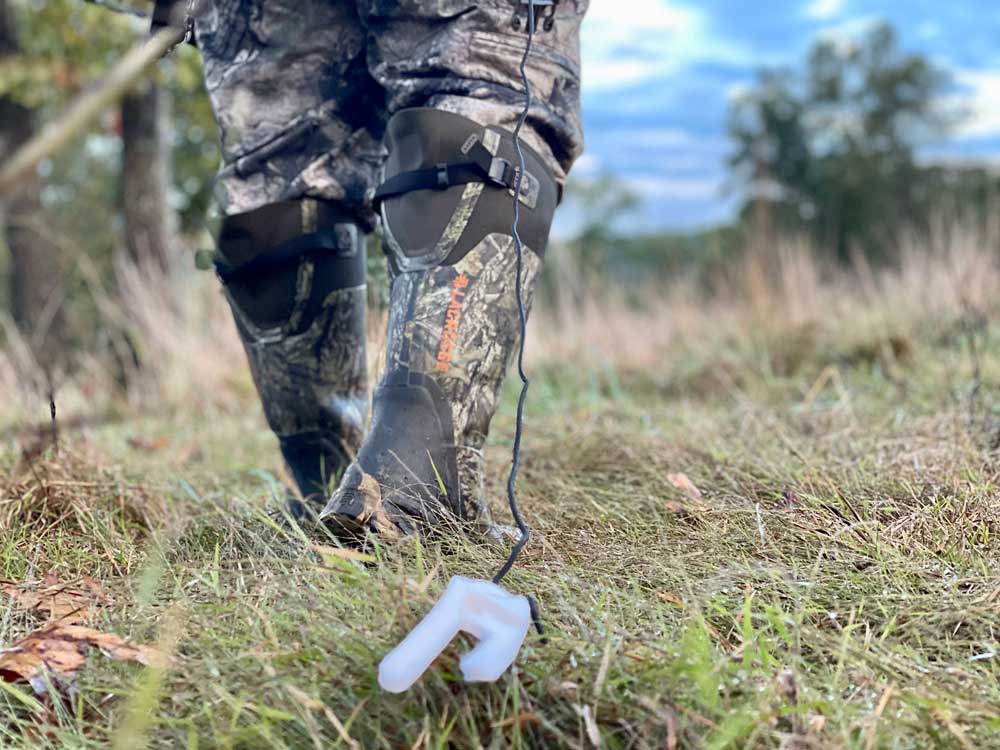
Wildlife Research Center’s Pro Drag Combo
One of my favorite phases of the rut is the cruising phase. The cruising phase of a buck is precisely what it sounds like; they cruise around with their nose to the ground checking out the woods, fields, and anywhere else they might catch the scent of a doe in estrus.
When this phase is taking place, a product such as The Wildlife Research Center Pro Drag Combo is an excellent tool to use. The drag combo comes with a wick tied at the end of a long string. When it is time to use the drag, it is poured directly onto the wick and is spread by the hunter walking to and around the stand or blind sight. When a buck is cruising, he will catch the scent trail, then follow it like a dog trailing a scent trail. When the rut phase is correct, the scent trail tactic can lead a buck directly to the last spot you left the scent.
Buck Bomb Scent Hammock with Buc Rut Liquid Scent
During the last two weeks of October, bucks use scrapes to attract does and show dominance to other bucks. Buck scrapes will begin appearing heavier in mid-October when does begin to check out the scrapes, and several bucks will check the scrape to see if he can catch a doe before the other bucks. However, the scrapes became the most effective around Halloween.
At the end of October is when I like to use mock scrapes the most. When I first construct a mock scrape in mid-October, I use natural doe urine or something with more of the curiosity aspect rather than a ‘ready to breed’ feature. However, during the last part of October, I like to crank it up with dominant buck urine such as Buck Bomb’s Buc Rut.
Buc Rut contains fresh urine collected from bucks that are at least three and half years old. The collection of buck urines works excellent during the pre-rut when bucks are the most aggressive and territorial. When a buck smells the Buc Rut in a mock scrape, it ticks him off, enticing him to leave his scent in its place. Evoking the territorial trait will keep the buck close by, ensuring he gets first to pick when an estrus doe stops by the scrape.
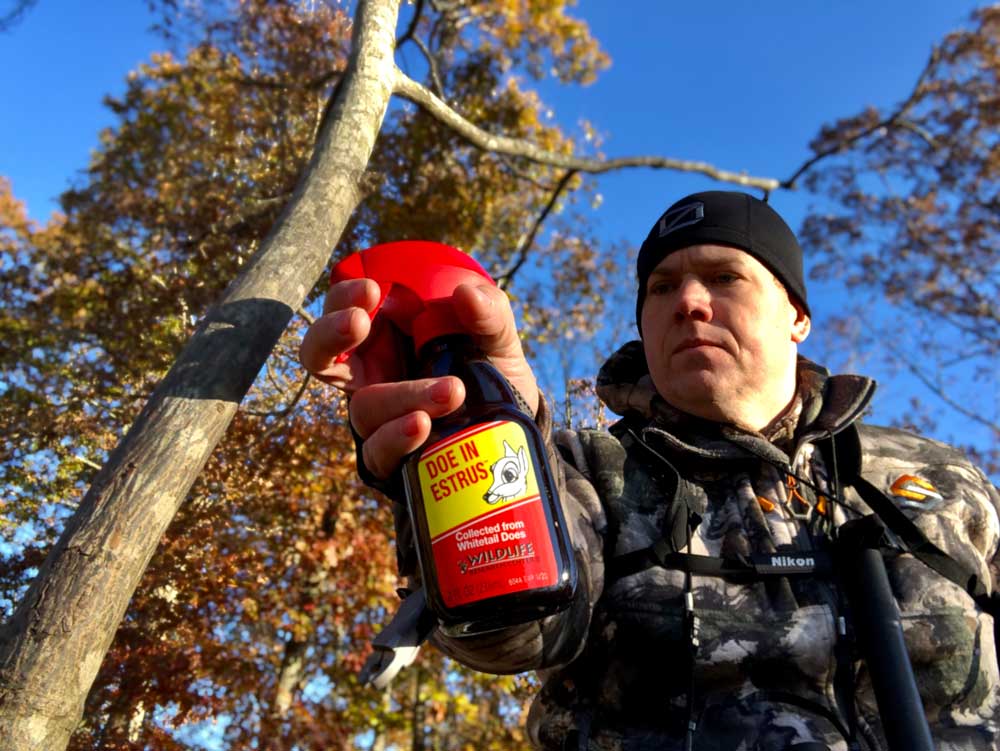
Wildlife Research Center Doe In Estrus Spray
When bucks are cruising during the pre-rut, searching for does who might be ready to breed, they often stop and check the wind using their incredible sense of smell, which can often lead to hunters getting busted if their scent is in the air.
When I start seeing the cruising activity pick up, I use a Doe In Estrus, such as Wildlife Research Center’s Doe In Estrus 8 oz. amber spray bottle. The Doe in Estrus can be found in liquid and sprays both. However, I prefer using the 8 oz. amber spray bottle during the cruising stage of October and November to spray a mist of molecules in the air periodically for cruising bucks to catch in the breeze.
When getting in a treestand in late October, I elect to spray Doe In Estrus on the ground in two to three different locations before getting in my stand. After settling in for a few minutes, I then spray three to four sprays for the breeze to take downwind. Using a scent with a mist creates a better chance for the scent to spread throughout the hunting area. To ensure that any bucks moving through the area catch the scent, I spray a few veils of mist every 30 minutes while in the stand. By spraying often, bucks think there is a nearby doe that is in estrus.
The misting of spray done with the WRC Doe In Estrus spray also acts as a natural cover scent while in the stand. I faithfully use scent control products such as Scent A Way, Scent Lok OZ ozone generators, and Scent Lok Carbon Alloy clothing. However, by spraying a mist of Doe In Estrus downwind, any foreign odors that may be left behind will be masked by the estrus scent.
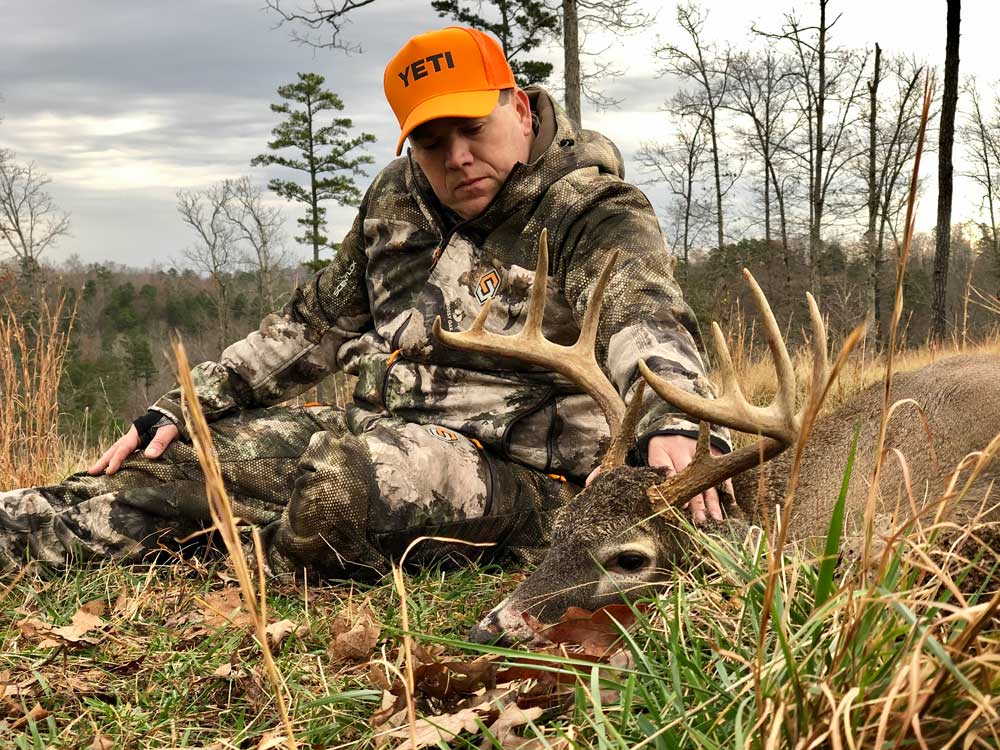
I have had the most entertaining hunts during the pre-rut in mid to late October and early November when bucks are up on their feet covering ground searching for does. This time of year, precisely the three weeks mentioned above, is often thought of as the “golden time” for scent companies as they see a high uptick in sales during this time. The reasoning behind these upward sales makes complete sense as hunters reap the reward while using scents during this period.

